Uniview’s IPC3234SA-DZK LightHunter is a 4MP deep learning-powered, vandal-resistant network dome camera with a swag of impressive features, including 1/1.8ths of an inch 2688 x 1520 pixel CMOS sensor, a strong 2.8 x 12mm optical zoom with autofocus, 40m of IR, H.265 and a bunch of deep learning rules.
Uniview is the smaller of China’s 3 big CCTV manufacturers but the fruits of its recent move to a new factory are apparent with this 4MP LightHunter dome. Once I finally get my network sorted so I can open the camera – thanks Michael from CRK – my first impressions are a bright image, a tiny bit of processing swim, low blur, good depth of field, good colour rendition – very subtle and discerning (getting deep purples), sharpness, very low CAs, barrel disortion of 8-9 per cent, slight overexposure of bright parts on a grey day (8EV under the camera) in default with WDR off. As soon as I use optical zoom, it’s resolution, resolution, resolution.
It’s tempting to go on with camera performance, but let’s take our usual look at features and functionality. Uniview LightHunter features a 1/1.8-inch progressive scan CMOS sensor, 2688 x 1520 pixels of resolution at 30fps, has a 2.8-12mm optical zoom with a fast aperture of F1.2 and auto focus, 40m IR, 120dB WDR, Ultra 265, H.265, Corridor Mode, ROI, ONVIF, 8 OSDs, and deep learning algorithms including people counting, face capture and deep perimeter protection.
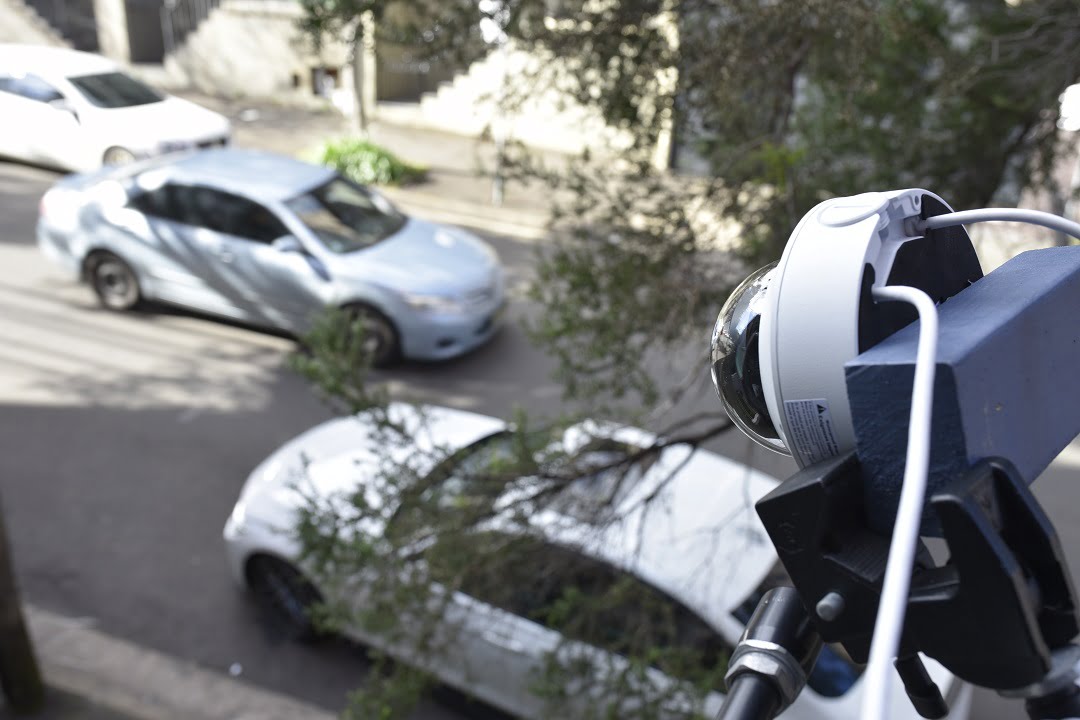
There’s also an audio in/out and an alarm in/out, a housing rated to IP67 and IK10, MicroSD up to 256 GB, horizontal angle of view range of 35.6-107.9 degrees and vertical angle of view of 20.4-75.4 degrees. There’s also adjustment angle of 0-355 degrees panning and 0-68 degrees tilting, along with 0-355 degrees of rotation. The camera is PoE and has reverse polarity protection and modest draw of around 4.5-10W. LightHunter has overvoltage and overcurrent protection, input short circuit protection.
There’s claimed 0.0005lux minimum scene illumination at F1.2 with AGC ON, and the usual 0 lux with IR, triple streams, privacy masking, general function watermark, IP address filtering, tampering alarm, alarm input, alarm output, access policy, ARP protection, RTSP authentication, user authentication. Dimensions are 148 x 111.3mm, weight is under 1kg at 960 grams, and working temp is excellent at -30-60C. Hand feel is great and setting up the camera is easy, too. The packaging is well done, the extras are just what you need – it’s mature work from Uniview.
Test Driving the Uniview LightHunter
We’re testing the camera on SEN’s dedicated Dell Optiplex 9060 server via a Netgear PoE gigabit switch – there’s nothing on the network but LightHunter for our test. Having made a mess of my network addressing trying to access the camera, which is set to a different range, I need a bit of help from CRK to get things sorted out but once that’s done and I undertake an adjacent firmware update, all is well.
This is a seriously intuitive interface from Uniview. Bouncing around inside the camera browser is a lot of fun. The first thing I always do in a camera test is try to get across zoom and autofocus. LightHunter is a gem in this department. To the right of the browser window are plus and minus symbols, which you press to zoom in and out. Autofocus is hanging over the back seat every inch of the way. This must be one of, if not the, best camera browsers I’ve used in a test.
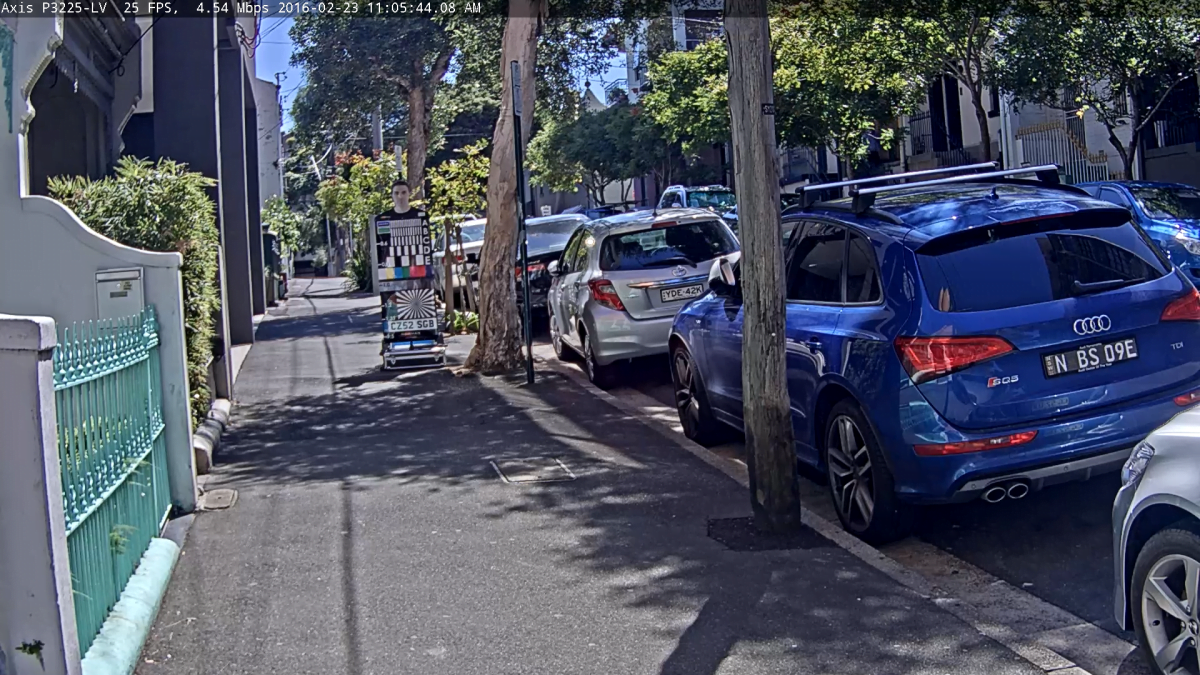
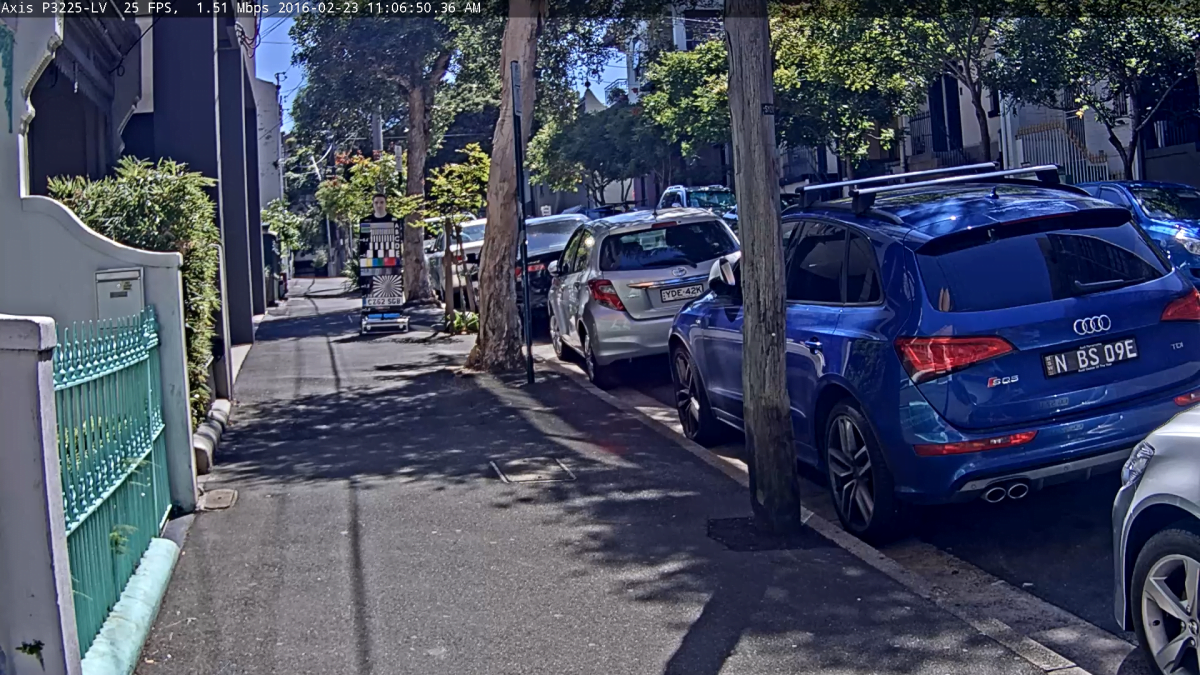
Here are the strong reds, the great depth of field, solid WDR management, sharpness and light balance.
Today is a great day to test LightHunter – for a start it’s winter – that means it’s going to be dark outside at 5.30pm. But there’s more. The street light out the front of the office is on the blink – that means we’re going to be unassisted in the immediate vicinity of the camera – for this reason I’m going to be taking measurements outside to make sure we know what LightHunter is up against.
Once the camera has been opened, had its rotation tweaked and is attached to the Magic Arm the afternoon has come in and light is falling. Regardless, my first impressions are a bright image, tiny bit of processing swim, low blur, good depth of field, good colour rendition offering strong reds, alongside very subtle and rich purples, excellent sharpness, very low CAs, slight overexposure of bright parts on a grey day (8EV under the camera) in default with WDR off.
As mentioned, the impression morphs once I get my hands on the optical zoom control – resolution is great. With a 2.8 to 12mm focal range this camera goes from very wide to very long – it’s great to have this flexibility at your fingertips from the point of view of operators. Given this camera is a dome, the reach means you need to plan if you intend to use it operationally, so as to avoid focusing on patches of road at the long end. It’s easier in my application, as the dome is installed at 90 degrees to the ground but you can’t do that in real world without provoking an ecosystem of bubble ghosts and biblical levels of veiling flare when the camera is exposed to direct sunlight.
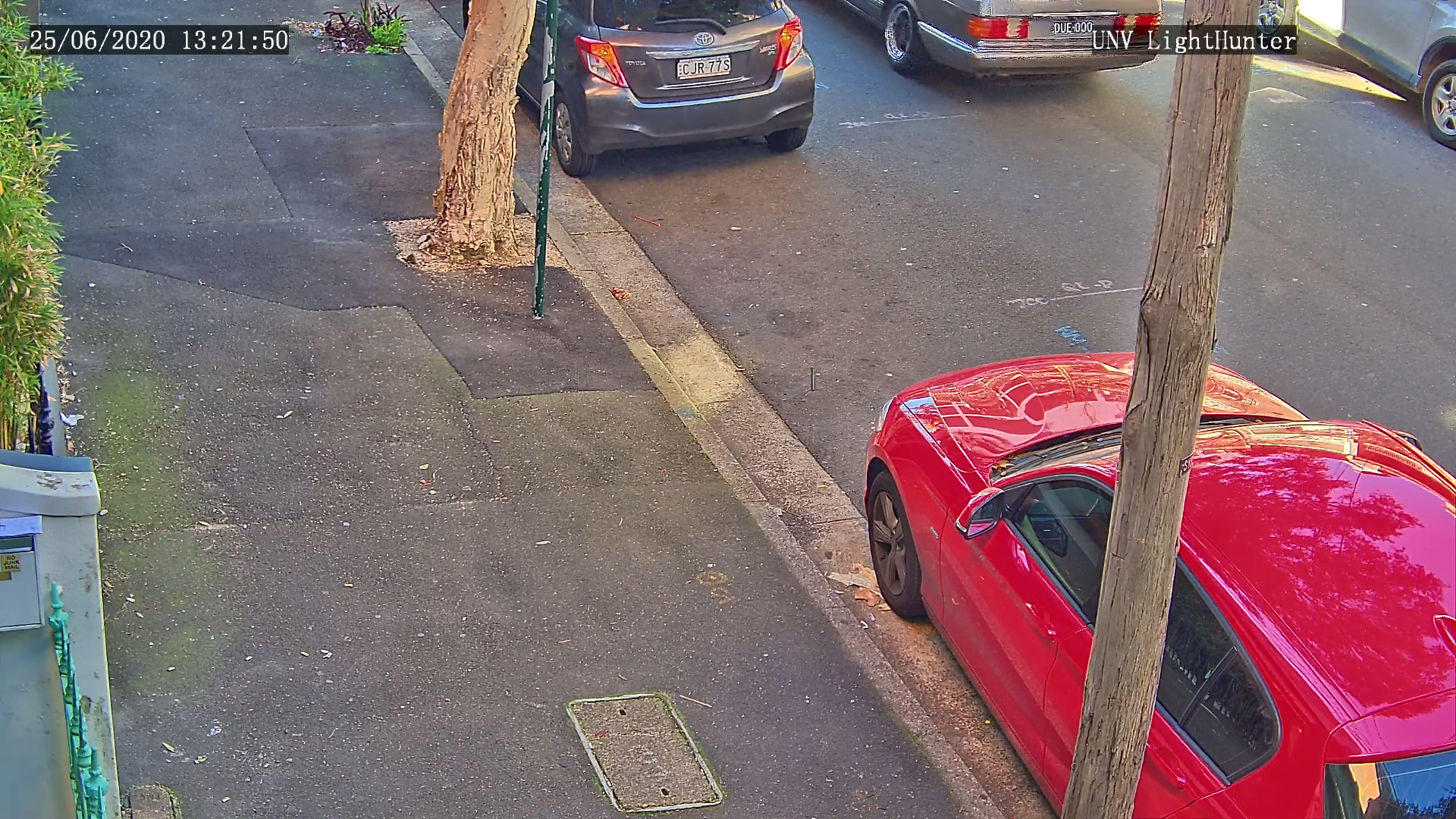
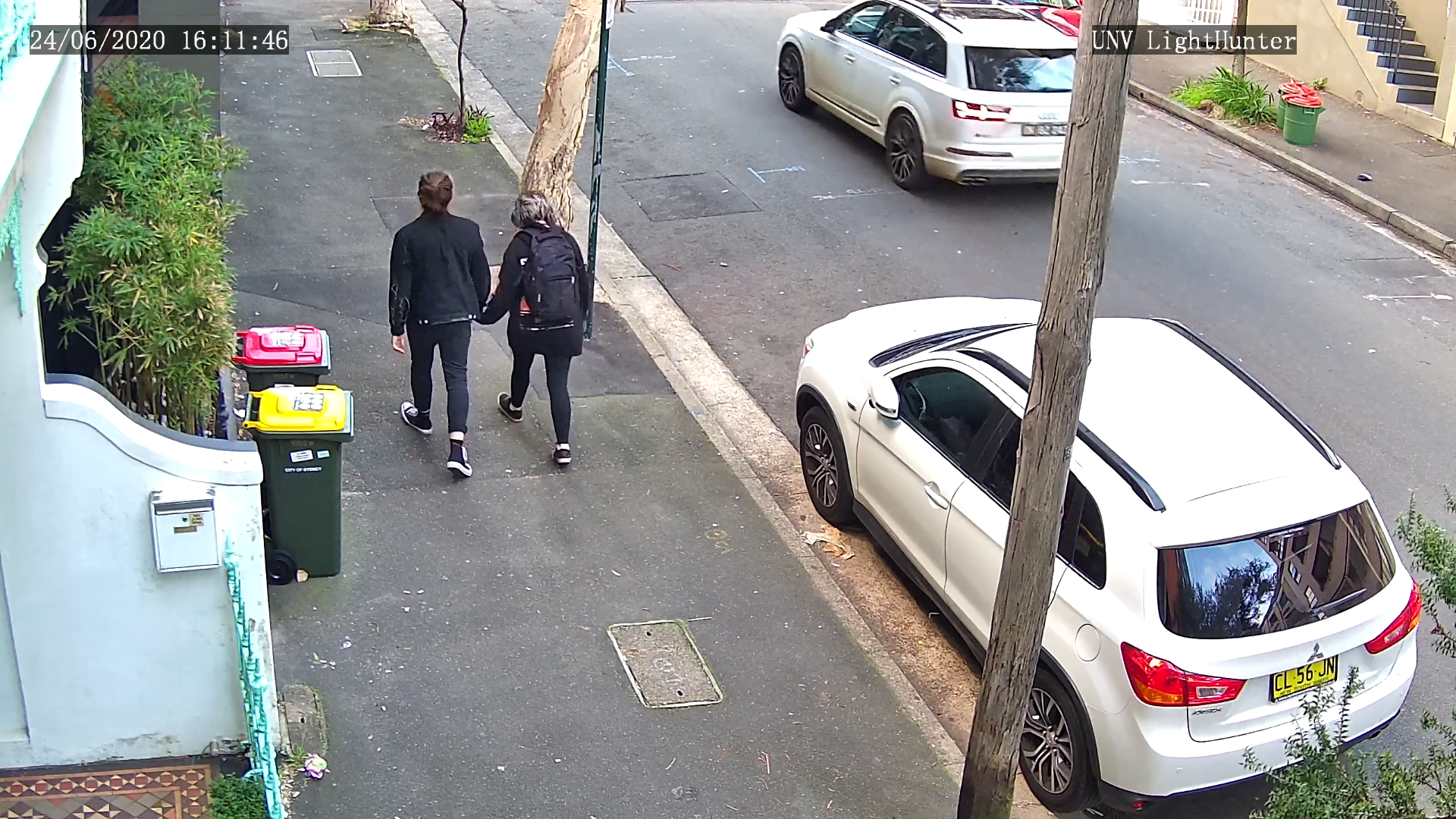
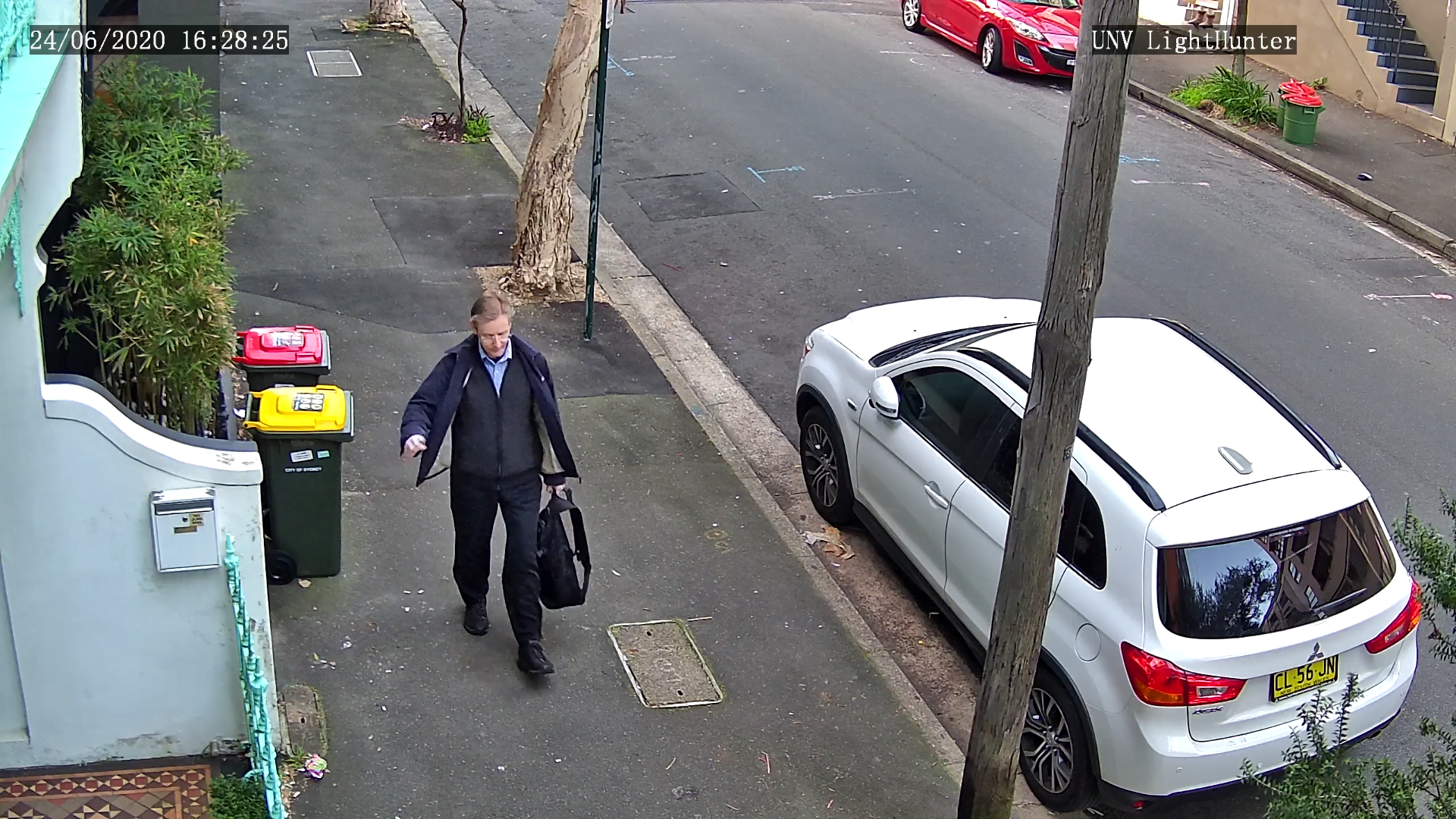
Pleasing here is the brightness, sharpness, face and vehicle recognition 45 mins before sunset.
As I begin to get my head around camera performance at default settings, LightHunter goes cleanly over into night mode at around 4.55pm in 50 lux with just a momentary sight of the cut filter as we shift. When I look at camera settings, default was auto, and the slider was set for a mid-point jump. It’s certainly getting dark quickly but I’m not ready to lose colour so it’s back into day mode we go.
Light keep dropping precipitously and by 5.10pm we have a measly 1EV (5 lux) between the buildings. Remember, there’s almost no streetlight assistance at the moment – LightHunter is very much on its own and I’m interested to see what light levels get down to, given they usually sit around the 4-7 lux mark. At 5.20pm I take another reader and my Sekonic light meter has thrown its hands up and is refusing to measure light under the lens – that means we have less than 2 lux – looking at the scene it’s probably a fair bit less than 2 lux – under 1 lux, in my opinion.
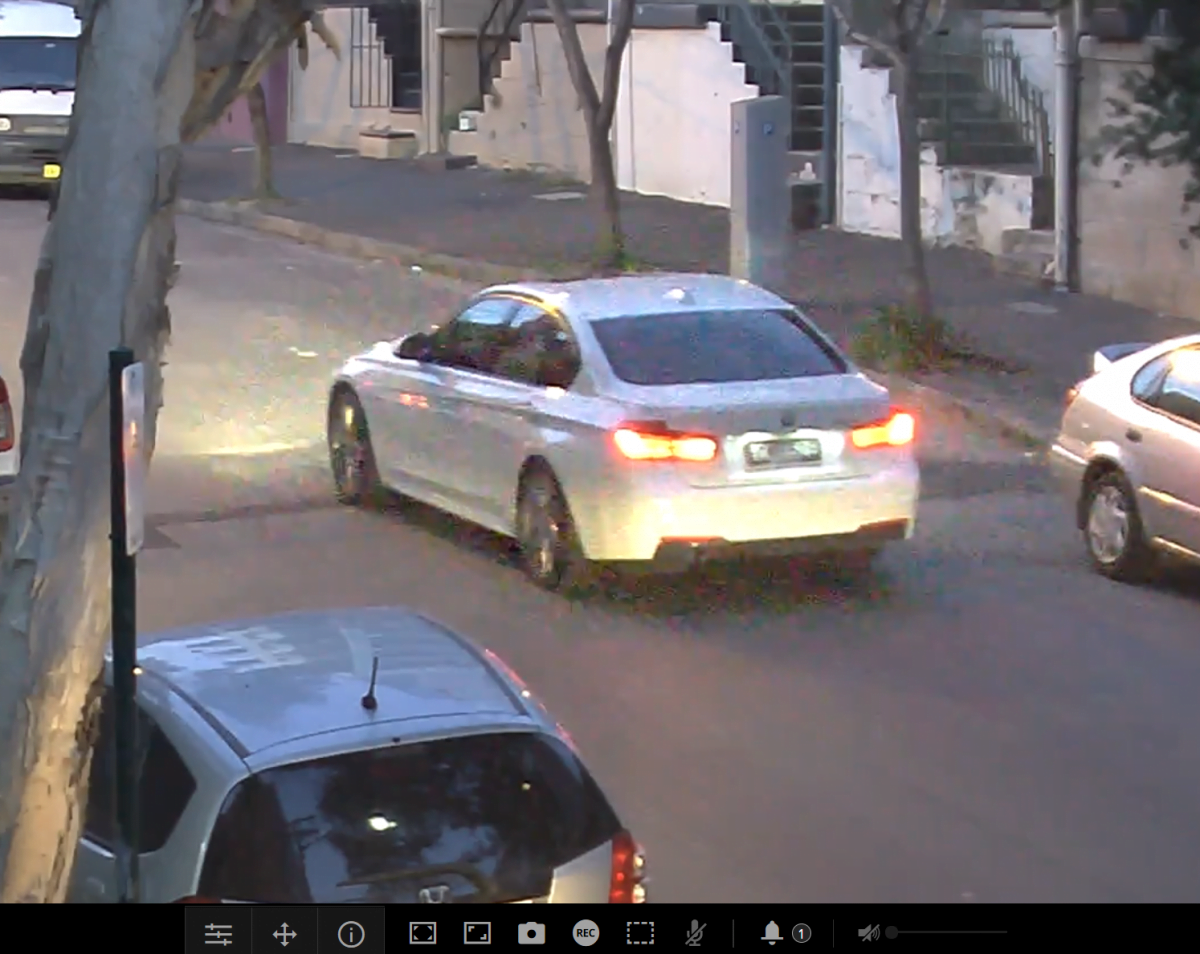
This is colour performance in 5 lux – I have the shutter at 1/30th of a second – detail remains high.
When I go all the way in to 12mm the aperture closes down, and things start to get quite dark. I reverse back out and in colour, at full wide with sub 2 lux at the lens, there’s mild noise. However, blur stays very controlled – I can’t understand this until I hop into settings and find the camera is set to a minimum shutter speed of 1/150th of a second – that’s a great operational specification but I can’t help going back to 1/30th of second. Noise evaporates and I get a little more blur from moving traffic.
I don’t notice much variation with bitrate, which I’ve set to high quality, full frame, and full resolution. It sits at around 5Mbps for the test, which for a 4MP camera like LightHunter, is pretty good. I could play with settings to see what the minimum acceptable setting is when it comes to bitrate but I’m more interested in how the camera handles low light.
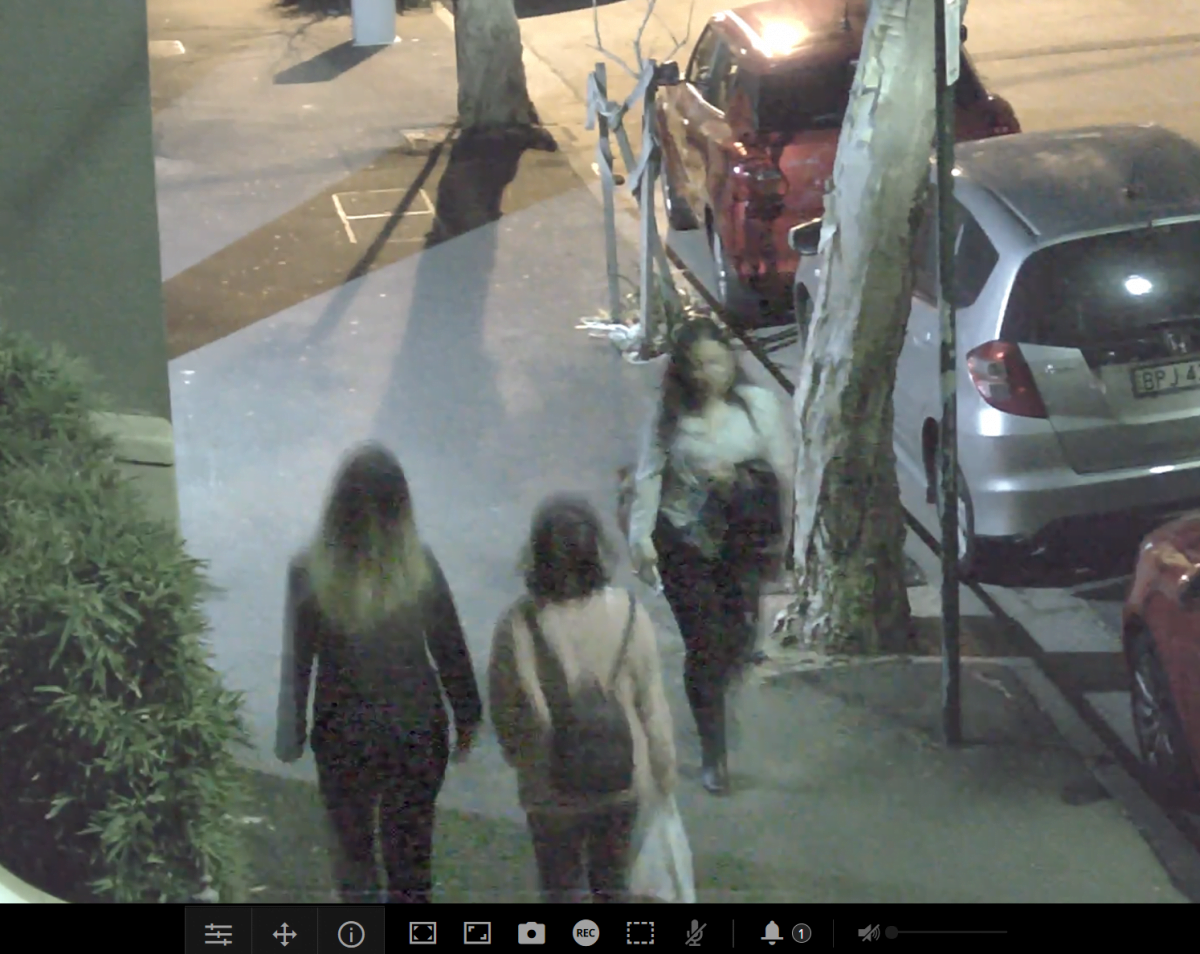
Now we are in sub 2 lux – you can see the effects of the shutter speed and court admissible faces at 10m.
Colour in sub 2 lux is surprisingly composite with none of the intrusive noise I’d have expected in such challenging conditions. Having the dome positioned at right angles does generate more than the usual level of flare at times but nothing you might not see in extremis in the real world. Depth of field is strong, there’s some yellow-orange casting deep in the scene – that’s the low-pressure lights at the end of the street.
There’s no chance of getting plates from moving vehicles in these conditions but there’s no issue with discerning vehicle type. Something I do have is court admissible faces wherever there is any ambient lighting. Considering how dark things are out front, this highlights the strength of LightHunter’s performance, as well as underscoring the value of a very small amount of directional light in applications where you really need faces at night. You don’t need to be much, and it doesn’t need to be pro-grade lighting to offer serious value, especially in 4-8m range.
Performance in night mode supported by IR is a revelation. I’ve not seen a dome that does this well with IR. There’s very little flare, depth of field is excellent, sharpness and tonal variations are very strong, too. There’s very low blur around moving leaves – getting plates isn’t possible but it never is. I do see a certain flatness to the monochrome image – I can’t put my finger on what that is – the way the digital image is built by firmware, perhaps. Car tyres and shoes seem to float just above the ground.
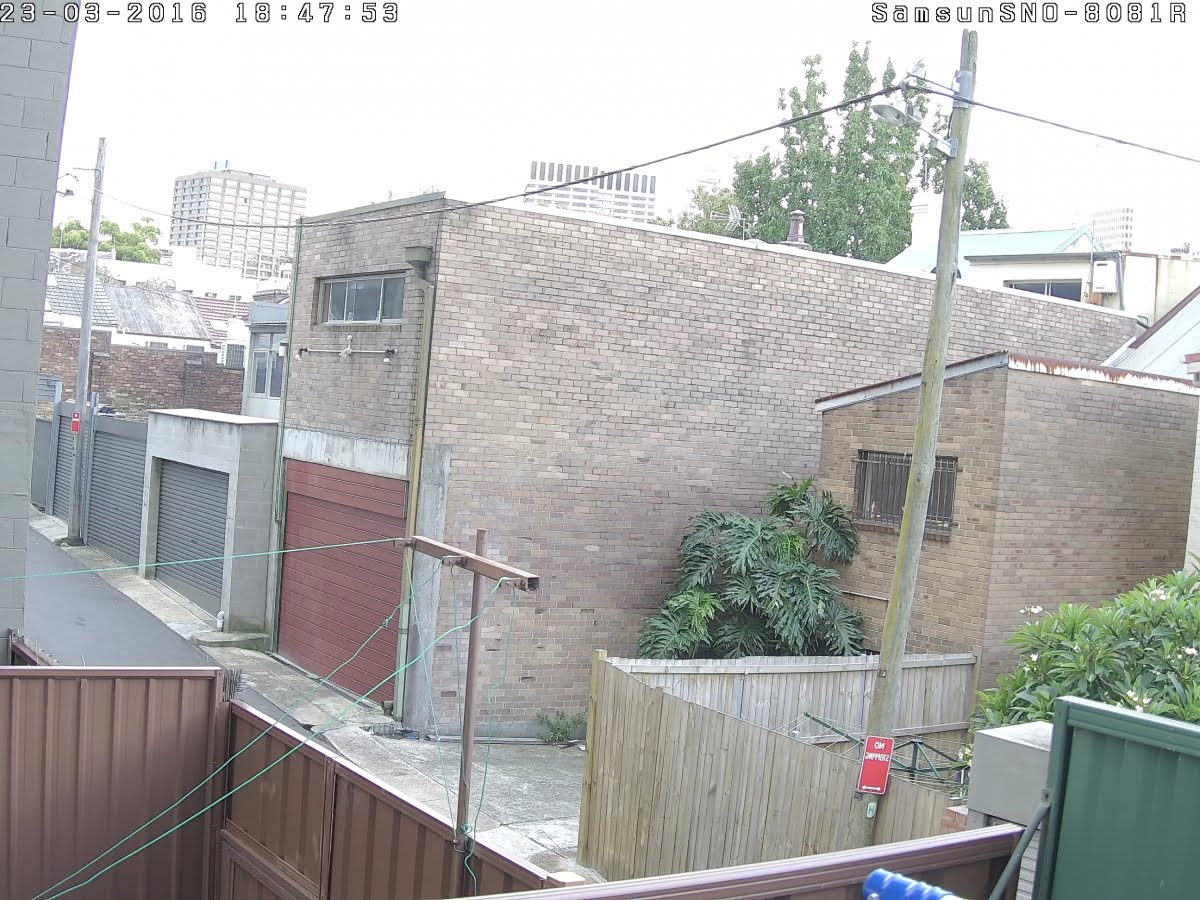
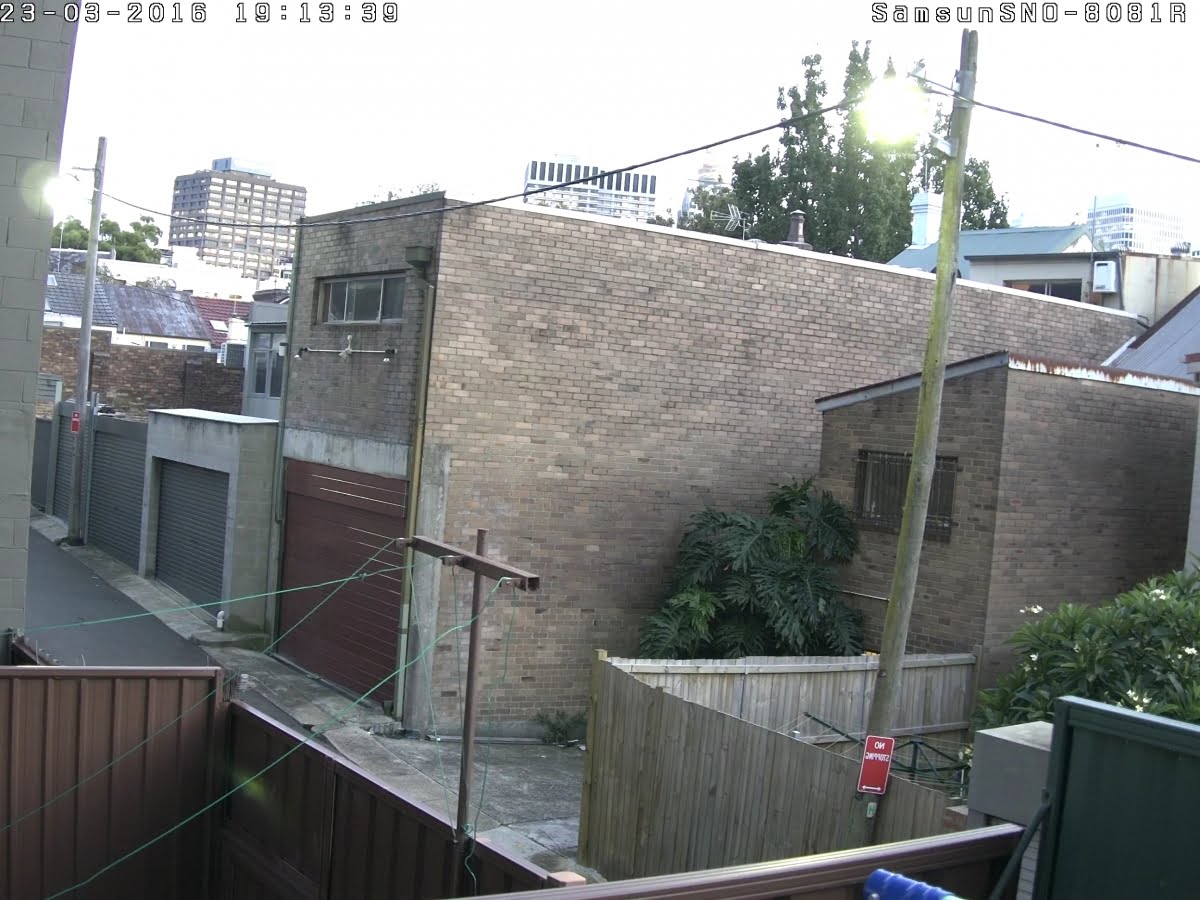
IR performance is excellent – if you download the image above (it’s 4MB) you’ll see the floating effect.
Any blur is low for slow moving subjects at 1/30th of a second. When you go to 1/150th of a second, things are a bit different. There’s a little more noise, the scene is a little darker, but the payoff is lower blur. One this is sure – this camera will reward time spent at the controls and the perfect settings are going to be different in every application. This partly comes down to the fact that tweaking in the camera browser is a click away.
Again, I can’t get moving plates in night mode with IR activated at 1/30th of second but I can get court admissible faces and thanks to that awesome, fluid zoom and focus, I can get them deep into the scene – out to 20 metres and beyond when zoomed in. At the same time, there’s huge ancillary detail from pedestrians. Bags, shoe styles, shades of clothing, decals on bags and jackets, hair ties, logos on shopping bags, etc.
It’s been dark outside since 520pm – by dark, I mean it’s been sub 2 lux – lower light than we have ever experienced in this test. But the performance of the camera is sufficiently strong that this has not been a problem at all. There are some deep shadows when locked in colour and I get blur when IR is not activated in monochrome but I’m holding strong depth of field. Something I do notice at one point is a considerable flare at the end of the street from the high beams of a car – with the camera set up as it is and with shutter speed at 1/30th of a second this is unsurprising. Ghosting at night is barely discernible.
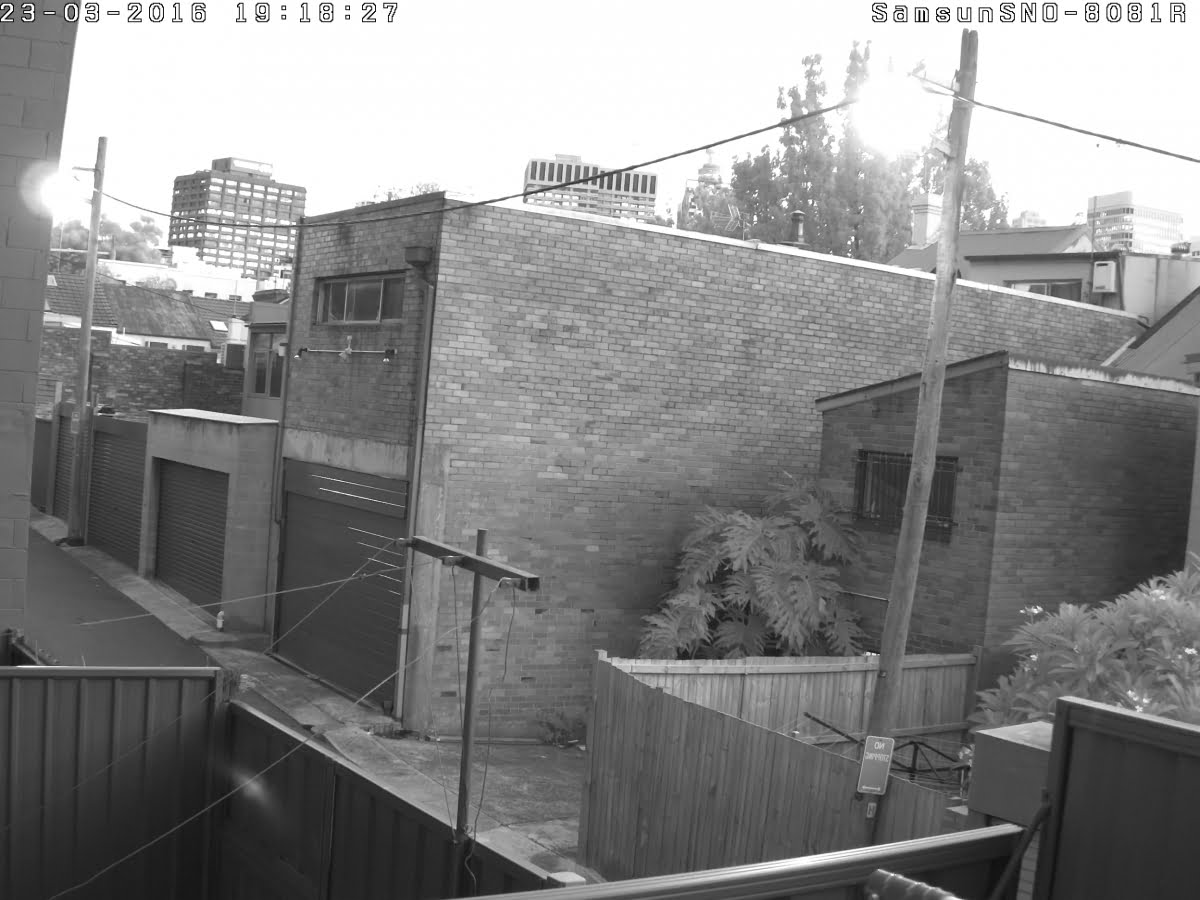
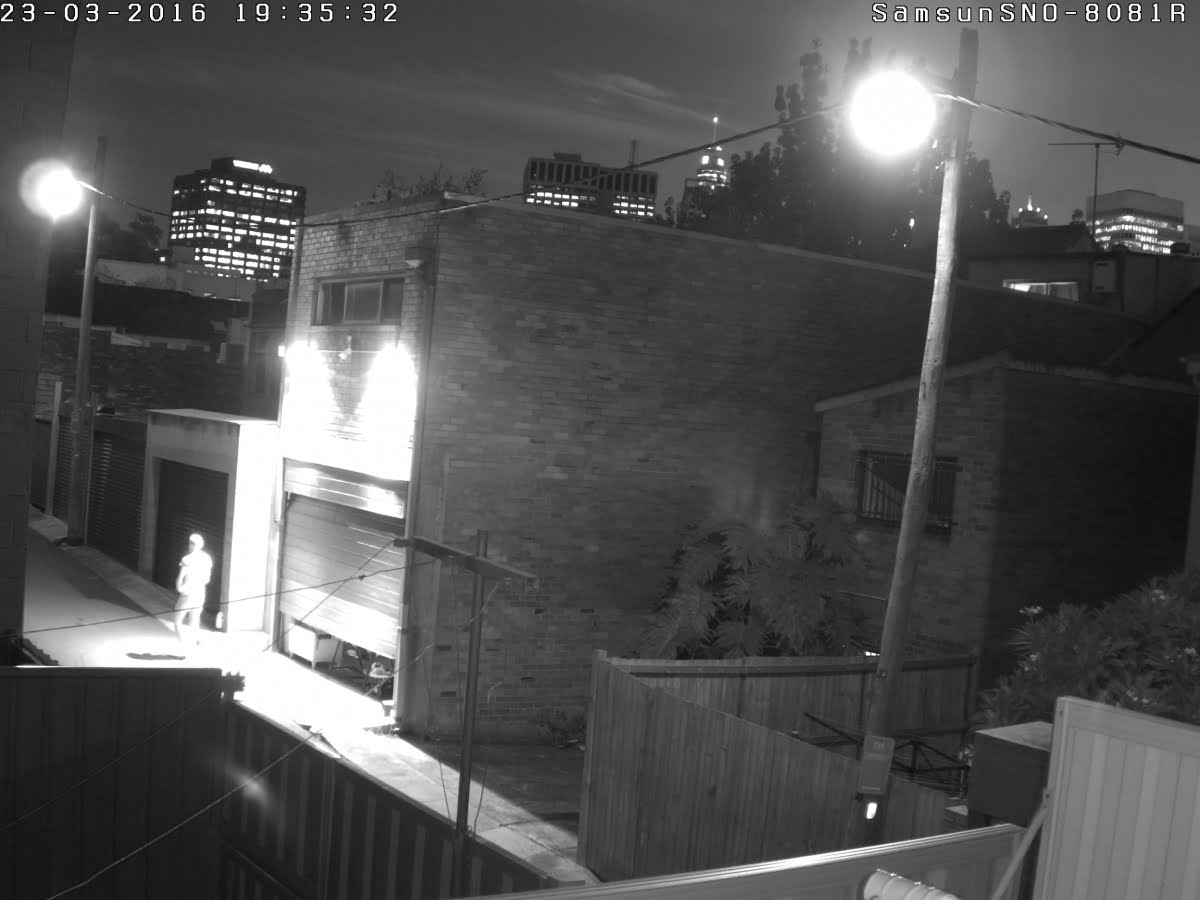
Strong performance with IR – levels of detail are excellent. There’s almost no local ambient light in image 2.
In daylight hours with variable lighting the sharpness and detail come to the fore in reflections and small details of attire. The high levels of detail create a degree of sharpness that makes subjects appear almost 3 dimensional – you have to see this to fully appreciate it. In the early morning with around strong light performance is impressive, though you need to keep the worst of the light from striking the bubble directly.
I try the camera with WDR off, but performance is much superior with it on and I waste no time reactivating it. Colour is strong – reds, blues, yellows, oranges, greens – all are vibrant, especially red, and as the day goes along, I notice the camera offers excellent light balance in an intensely variable scene. The high resolution is pleasing, too. It gives that extra detail that makes digital zoom worth having, though with optical zoom so readily to hand I only play with it because it’s there.

Slightly wound in here and the camera manages backlight very well, retaining light balance and DoF.
In the presence of strong backlight, I get excellent faces and plates, which is good performance, considering WDR functionality sometimes has a way of messing with an image stream. Depth of field is very solid reaching all the way into the scene – 50 metres and beyond. At one point I have the face of a Yaffa staffer at 20 metres, good detail of a person at a parking metre at 40m and a school kid’s at 60m or so. There’s glittery sharpness everywhere – it’s a very pleasing image – I’m probably at the equivalent of around 4mm, which is a favourite focal length for street work.
At 8.51am the dome bubble is hit full in the face by 68,000 lux of direct sunlight and this sets off internal reflections, ghosts, and veiling flare. It’s not LightHunter’s fault – I’ve not installed the camera with any sympathy. But it does highlight the challenges you’ll face using domes in external applications – keeping them under rooflines is better during extreme times. But even still there will be moments they’ll be tested to the limit.
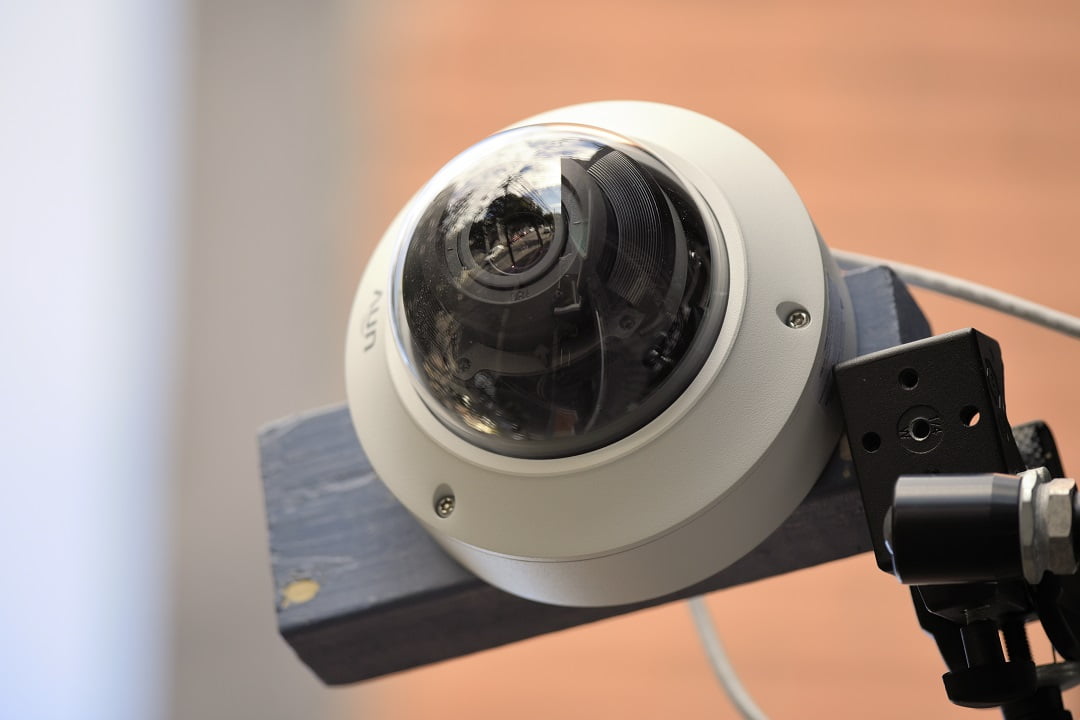
Lighthunter is installed at right angles – tough conditions for any dome – but it does well.
By 9.03am the particularly provocating angle of light has gone – the scene is excellent, with good light balance, great depth of field and great sharpness – it’s a bit Axis-like, in my opinion, in a good way. As the sun swings, the image does nothing but improve and that huge resolution delivers great sharpness, excellent faces, plates and all the rest. It’s only later in the day when the sun is getting blocked by the buildings that plates become hit-miss, though faces and all the other details security people love remain very good indeed.
Conclusion
Uniview’s LightHunter is an excellent dome camera. It’s not just that the optical performance and the camera sensor does a good job, in extreme conditions it stands up to be counted. And best of all, it’s extremely easy to drive all the strong functionalities that are on offer. After my test I try to think of a particular failing of the camera, but I can’t come up with anything. This is a highly evolved video surveillance tool – highly recommended.
Features of the Uniview IPC3234SA-DZK LightHunter:
* 1/1.8-inch, progressive scan, CMOS
* Up to 2688 x 1520 pixel resolution
* 2.8-12mm optical zoom and auto focus
* Smart IR, up to 40m IR distance
* 120dB True WDR
* Ultra 265, H.265, Corridor Mode, ROI, ONVIF
* With deep learning algorithm: people counting, face capture, perimeter protection
* AC24V ±25%, DC12V ±25%, PoE
* Support 1/1 audio in/out, 1/1 alarm in/out
* IP67, IK10 ratings against weather, vandalism.
#sen.news




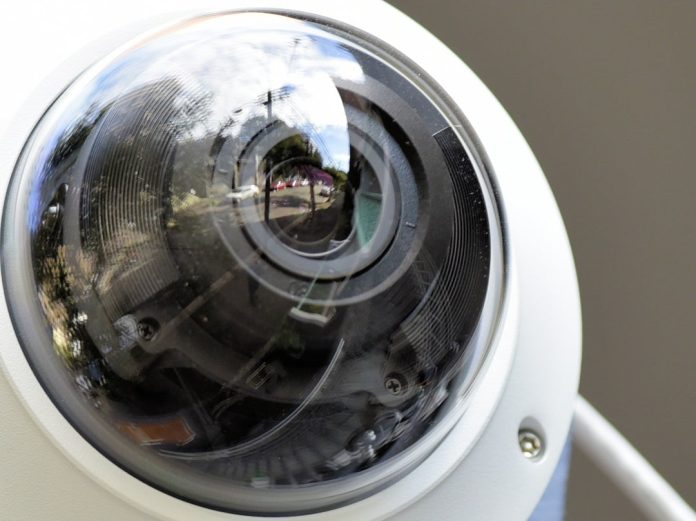





“This review of the Uniview LightHunter 4MP Dome Camera offers a comprehensive analysis of its performance and features. From its impressive low-light capabilities to its durable construction, the review highlights the camera’s strengths effectively. The detailed breakdown and real-world testing provide valuable insights for those considering investing in this surveillance solution. Overall, a well-written and informative assessment of a promising product.”